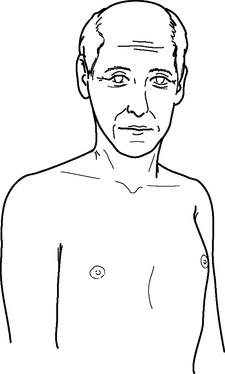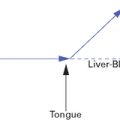 OBSERVATION OF THE CHEST AND ABDOMEN
OBSERVATION OF THE CHEST AND ABDOMEN
CHEST
The front of the chest is influenced by the Lung and Heart channel and by the Directing and Penetrating Vessels; the sides of the chest are influenced by the Gall-Bladder and Liver channels (Fig. 16.1).
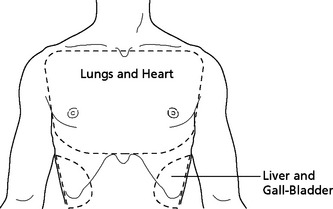
Fig. 16.1 Chest areas
For a more detailed description of the patterns causing chest signs, see Part 5, Chapter 63.
Box 16.1 summarizes the channels influencing the chest.
Protruding chest
Symptoms and Signs, Chapter 63
The most common cause of a protruding chest (Fig. 16.2) is chronic retention of Phlegm in the Lungs. Other causes include severe, chronic Liver-Qi stagnation or Blood stasis in the chest.
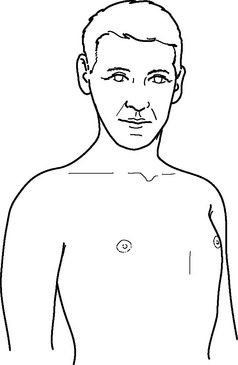
Fig. 16.2 Protruding chest
Sunken chest
Symptoms and Signs, Chapter 63
The most common cause of a sunken chest (Fig. 16.3) is a deficiency of Qi or Yin of the Lungs. A Kidney deficiency may also cause a sunken chest.
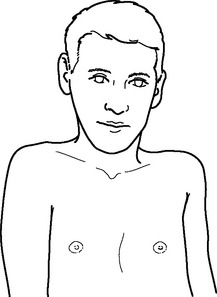
Fig. 16.3 Sunken chest
Protruding sternum
Symptoms and Signs, Chapter 63
The protruding sternum (Fig. 16.4) is either hereditary, in which case it is due to a constitutional deficiency of the Lungs and Kidneys, or it is caused by retention of Phlegm in the Lungs.
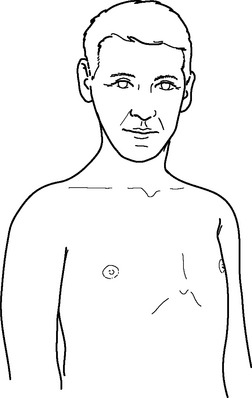
Fig. 16.4 Protruding sternum
Chest sunken on one side
Symptoms and Signs, Chapter 63
The chest can become sunken on one side (Fig. 16.5) either because of a deficiency of the Lungs, specifically affecting one lung, or because of retention of Phlegm-Fluids, often with Blood stasis.

Fig. 16.5 Chest sunken on one side
ABDOMEN
The regions of the abdomen in Chinese medicine are shown in Figure 16.7.
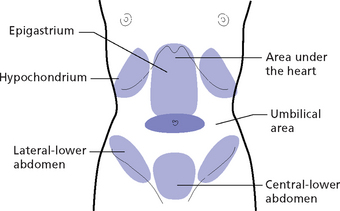
Fig. 16.7 Abdominal areas
Observation of the abdomen is an important part of observation in the clinic and one that should always be carried out in conjunction with palpation of the abdomen. In particular, observation of the abdomen is important because the epigastrium reflects the state of Stomach and Spleen (the Root of Postnatal Qi) and the lower abdomen that of the Kidneys (the Root of Prenatal Qi).
For a more detailed discussion of the patterns involved in abdominal signs, see Part 5 Symptoms and Signs, Chapter 71.
Abdominal size
Abdominal distension
Interrogation, Chapter 38; Symptoms and Signs, Chapter 71
Box 16.2 summarizes the patterns underlying abdominal distension.
Abdominal masses
Symptoms and Signs, Chapters 71 and 89
Abdominal masses are called Ji Ju. Ji indicates actual abdominal masses which are fixed and immovable; if there is an associated pain, its location is fixed. These masses are due to stasis of Blood and I call them ‘Blood masses’. Ju indicates abdominal masses which come and go, do not have a fixed location and are movable. If there is an associated pain, it too comes and goes and changes location. Such masses are due to stagnation of Qi and I call them ‘Qi masses’.
Box 16.3 summarizes the two types of abdominal masses.

